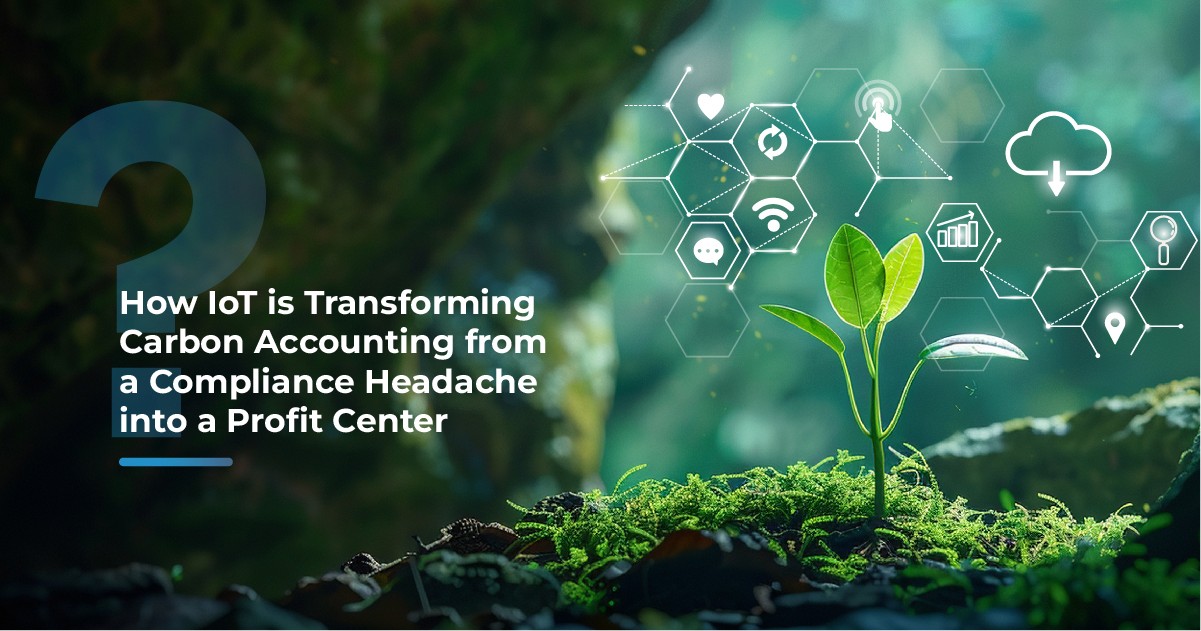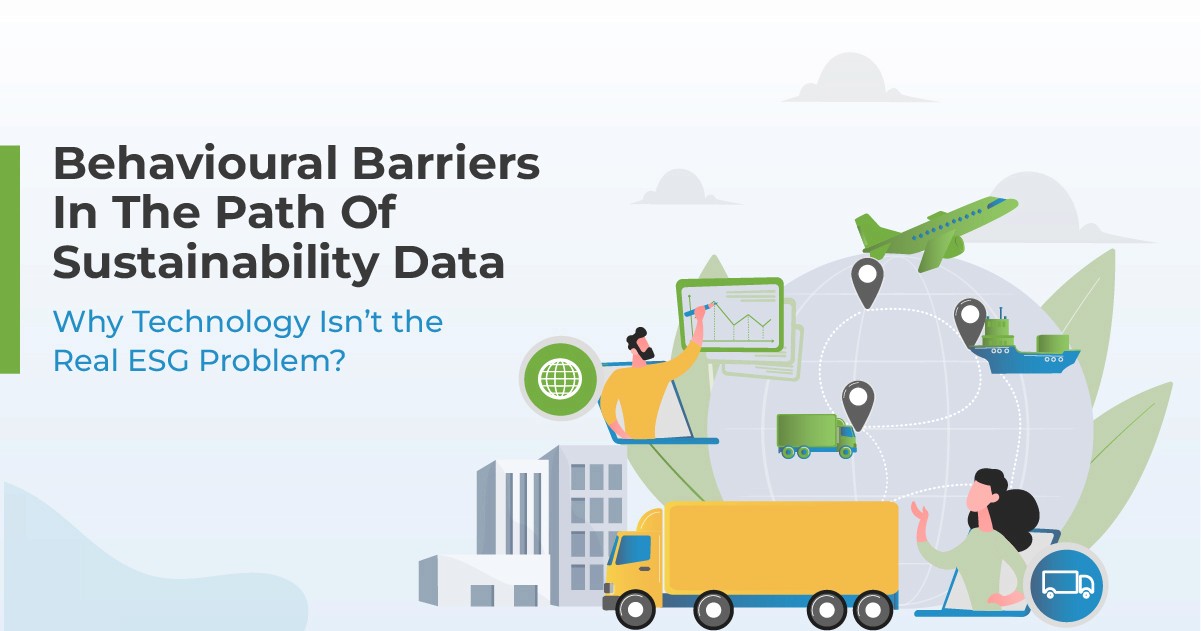Why Net-Zero Trade Matters
Global trade has always been the backbone of economic growth. For decades, supply chains were optimised around cost and speed producing more at lower prices and moving goods across continents with maximum efficiency. But as the world faces the realities of climate change, this traditional model of trade is no longer enough.
Net-zero trade is the next frontier. At its core, net-zero trade means designing and managing supply chains that balance cost, speed, and carbon. It is not just about moving goods faster or cheaper, but about ensuring that every shipment, warehouse, and supplier decision is aligned with a pathway to eliminate or offset greenhouse gas (GHG) emissions.
The urgency is clear. According to the International Transport Forum (ITF), the transport sector including freight and logistics - accounts for nearly 25% of global emissions. As global demand for goods continues to rise, the emissions footprint of trade is set to increase unless systemic changes are made. In other words, without net-zero supply chains, the world cannot meet its climate targets.
But beyond the environmental imperative, the business case for net-zero trade is compelling:
Regulatory compliance: Frameworks like the EU’s Carbon Border Adjustment Mechanism (CBAM) will soon require exporters to disclose and pay for the carbon intensity of their goods. Non-compliance means tariffs, fines, or even exclusion from premium markets.
Buyer expectations: Procurement teams from global brands are increasingly demanding sustainability data alongside price and quality. Scope 3 emissions reporting is now a prerequisite for many contracts.
Investor pressure: ESG-linked financing is gaining traction. Investors are rewarding climate-resilient companies with lower capital costs and higher valuations.
Operational efficiency: Smarter supply chains that track, measure, and reduce emissions often uncover cost savings in energy, fuel, and resource use.
Risk management: Climate disruptions from shipping delays to extreme weather are no longer hypothetical. Building resilience through sustainable supply chains is a business continuity strategy.
Core Pillars of Smarter, Greener Supply Chains

Building a net-zero trade ecosystem requires a strategic focus on three interconnected pillars: decarbonising transport and logistics, sustainable infrastructure, and carbon management with offsets. Each pillar offers actionable pathways for companies to reduce their carbon footprint while enhancing efficiency and competitiveness.
A. Decarbonising Transport & Logistics
Transportation is one of the largest contributors to trade-related emissions, making decarbonisation a critical lever. Companies are increasingly adopting fleet electrification as a cornerstone strategy. Electric trucks, delivery vans, and last-mile vehicles not only cut greenhouse gas emissions but also reduce fuel costs over the long term.
Beyond electrification, alternative fuels such as hydrogen, biofuels, and renewable natural gas are gaining traction, particularly for heavy-duty transport segments where full electrification is still a challenge. These fuels provide a practical pathway to lower emissions while maintaining operational reliability.
Efficiency is equally important. Leveraging AI and IoT-based route optimisation helps reduce idle time, avoid congestion, and minimise fuel consumption. Real-time tracking and predictive analytics ensure that every mile traveled contributes to both operational efficiency and environmental responsibility.
Together, these approaches allow companies to decarbonise logistics without compromising speed or service quality, setting a new standard for sustainable trade.
B. Sustainable Infrastructure
The green transformation extends beyond transportation to the very backbone of supply chains: warehouses, distribution centers, and packaging. Modern warehousing solutions integrate renewable energy sources such as solar panels, energy-efficient lighting like LEDs, and automation systems that reduce electricity consumption.
Packaging innovation is another critical frontier. Companies are increasingly adopting recyclable, biodegradable, and minimalistic packaging designs to reduce material waste and lifecycle emissions. By rethinking infrastructure and materials, businesses can create supply chains that are not only carbon-conscious but also cost-effective and scalable.
C. Carbon Management & Offsets
No supply chain can be fully green without robust carbon measurement and management. Businesses must track Scope 1, 2, and 3 emissions across logistics, manufacturing, and sourcing activities. This comprehensive visibility enables targeted decarbonisation efforts and ensures regulatory compliance.
For emissions that are currently unavoidable, investing in verified carbon credits or participating in certified offset programs allows companies to neutralise their environmental impact responsibly. When combined with active reduction strategies, carbon offsets help organisations claim credible net-zero status while continuing to innovate and grow.
India at the Crossroads of Net-Zero Trade
India is at a pivotal moment in global trade. With initiatives like the Carbon Border Adjustment Mechanism (CBAM) coming into effect in 2026, Indian exporters will need to prove their ESG and carbon readiness to maintain access to key markets such as the EU. Compliance is no longer optional — it is fast becoming a prerequisite for continued trade.
The shift toward China+1 strategies offers Indian suppliers a unique opportunity to capture a larger share of global supply chains. But the catch is clear: companies that cannot demonstrate sustainable practices risk being bypassed in favour of ESG-compliant alternatives. For Indian SMEs, the path forward lies in digital carbon tracking, circular design, and adoption of renewable energy. These strategies not only enable compliance but also help move up the value chain, making businesses more attractive to global buyers.
Government support, technology adoption, and public-private partnerships are accelerating this transition, but proactive corporate leadership remains the key differentiator. Those who embed sustainability into their core operations today will be the winners in tomorrow’s trade landscape.
The Global Shift Toward Carbon-Conscious Supply Chains
Net-zero trade is not just an Indian imperative - it is a global trend reshaping supply chains worldwide. Multinational companies are increasingly demanding ESG transparency from suppliers across Asia, Europe, and the Americas. Regulatory frameworks such as the EU’s CSRD, the US’s SEC climate disclosure rules, and evolving global reporting standards are pushing companies to adopt traceable, audit-ready ESG practices.
Advanced economies are also tying supply chain financing and contracts to sustainability performance, making carbon efficiency a direct economic advantage. Digital solutions, from AI-powered logistics optimisation to blockchain-enabled traceability, are enabling businesses to meet these demands efficiently.
For companies operating across borders, collaboration and data integration across suppliers, logistics partners, and buyers are essential. The race is not just about compliance — it is about building resilient, transparent, and future-ready supply chains that can withstand regulatory pressures, market volatility, and climate-related risks.
The CEO Playbook: From Compliance to Competitive Advantage

For business leaders, the shift to net-zero trade isn’t just a regulatory obligation — it’s a strategic opportunity. The companies that treat sustainability as a core business driver will outperform those that see it only as compliance. Here’s a playbook for CEOs and CXOs to turn carbon-conscious trade into a lasting competitive edge:
1. Map Carbon Hotspots Across the Supply Chain
Begin with a detailed assessment of emissions across manufacturing, logistics, packaging, and sourcing. Understanding Scope 1, 2, and 3 emissions helps identify where reductions will deliver the greatest impact.
2. Digitise for Traceability and Reporting
Adopt digital platforms that provide real-time dashboards, traceability, and audit-ready reporting. This not only satisfies regulatory requirements but also builds trust with buyers and investors who increasingly demand transparency.
3. Collaborate with Suppliers
Sustainability is a chain-wide endeavour. CEOs must work with suppliers to align ESG goals, share best practices, and co-invest in clean technologies. Supplier collaboration ensures that compliance does not stop at the factory gate but extends across the entire value chain.
4. Reimagine Compliance as Strategy
Instead of treating CBAM, CSRD, or other ESG frameworks as checkboxes, forward-thinking leaders leverage compliance as a differentiator in global markets. Demonstrating readiness can position a company as a preferred partner for global buyers and premium contracts.
5. Invest in Innovation and Circularity
Leaders should actively explore new materials, automation, and circular business models. From closed-loop recycling to smart manufacturing, innovation not only reduces emissions but also opens new revenue streams.
The message is clear: sustainability leadership is business leadership. CEOs who embrace this mindset will future-proof their organisations, attract capital, and gain a long-term edge in global trade.
The Future of Net-Zero Trade

Net-zero logistics and supply chains are rapidly evolving from best practice to baseline expectation. Within the next decade, sustainability will no longer be a differentiator — it will be the minimum requirement for participation in global trade.
Companies that move early will enjoy clear advantages:
Buyer Trust & Long-Term Contracts: Demonstrating sustainability readiness positions companies as reliable partners for multinational buyers.
Efficiency & Cost Savings: Cutting fuel, energy, and packaging waste delivers measurable bottom-line improvements.
Access to Green Finance: Sustainability-linked loans, lower cost of capital, and preferential investments will increasingly favour companies with credible net-zero strategies.
While efficiency has always been a priority in supply chains, the new era is defined by carbon-conscious efficiency. Businesses that fail to adapt risk commoditisation, shrinking market access, and potential exclusion from regulated trade flows.
The future of net-zero trade is about redefining competitiveness. It’s not just about moving goods faster and cheaper — it’s about moving them smarter, greener, and with accountability to the planet. Those who seize this shift today will not only reduce risks but also shape the standards of tomorrow’s global economy.
Conclusion: From Efficiency to Indispensability
The road to net-zero trade is about redefining efficiency for a carbon-constrained world. Traditional levers like cost optimisation and faster delivery will still matter, but they will no longer be enough. In the future, buyers, regulators, and investors will judge supply chains not only on how efficient they are — but on how sustainable they are.
Those who move early will shape global trade standards, secure premium contracts, and access green capital. Laggards, on the other hand, risk commoditisation, shrinking market access, and eventual exclusion from regulated markets.
In short: efficiency will get you shortlisted. A net-zero strategy will make you indispensable.
This is where partners like Onlygood can help. As an AI-powered ESG and sustainability intelligence partner, Onlygood enables businesses to move beyond compliance and translate sustainability into measurable outcomes — from decarbonisation and Scope 1–3 GHG accounting, to CBAM/ESG reporting, supplier onboarding, and net-zero strategies.
If your organisation is serious about turning sustainability into a competitive advantage, it’s time to act.





